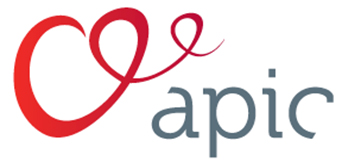

Module 1 - 90 min (Online) | |
|
31 January 09:00 (Moroccan time)
1 - TAVI indications & procedural planning (JB, RCT) |
|
|
|
| 1.1 | Principles of THV selection |
| 1.2 | MSCT imaging skills in TAVI |
| 1.3 | TAVI primary vascular access planning according to anatomy. |
| 1.4 | Challenging arterial access: the role of alternative access routes and of percutaneous interventions |
| 1.5 | TAVI secondary vascular access planning |
Module 2 - 90 min (Online) | |
|
14 February 09:00 (Moroccan time)
2 - The TAVI procedure (RCT) |
|
|
|
| 2.1 | Procedural set-up |
| 2.2 | Pharmacological strategies |
| 2.3 | Large bore access |
| 2.4 | Rapid pacing techniques |
| 2.5 | Balloon aortic valvuloplasty (BAV) |
| 2.6 | Technical considerations for THV deployment |
Module 3 - 90 min (Online) | |
|
28 February 08:00 (WET & Moroccan time)
3 - The TAVI procedure (RCT) Prediction, prevention and management of procedural complications (HMG) |
|
|
|
| 3.1 | Preparation for complications: essential equipment, vascular and surgical access, team training |
| 3.2 | Vascular access: pre-procedure assessment of access site selection, procedure performance, and use of closure devices. |
| 3.3 | Endovascular management of vascular complications: perforation, dissection, and occlusion |
| 3.4 | Management of bleeding complications: femoral, pericardial, and remote |
| 3.5 | Conduction disorders: impact, prediction, prevention, management |
| 3.6 | Valve malposition: migration, embolization or ectopic deployment |
| 3.7 | Paravalvular regurgitation (PVL) peri-TAVI |
| 3.8 | Coronary obstruction: prediction, risk-assessment, prevention, management |
| 3.9 | Aortic injury: prediction, avoidance, and management of aortic dissection and annular rupture |
| 3.10 | Acute hypotension: algorithm to identify cause of hypotension and acute management |
| 3.11 | Stroke: risk evaluation, cerebral protection devices, acute management, clinical outcomes |
| 3.12 | Patient prosthesis mismatch (PPM): prevention, diagnosis, outcomes |
Module 4 - 90 min (Online) | |
|
14 March 08:00 (WET & Moroccan time)
4 - Post procedural management (JB, EO) |
|
|
|
| 4.1 | Discharge from hospital: timing, planning, execution, and liaison with family |
| 4.2 | Anti-thrombotic therapy after TAVI |
| 4.3 | Clinical and imaging follow-up after TAVI: clinical review, imaging, endocarditis prevention, rehabilitation |
| 4.4 | Bioprosthetic valve dysfunction (BVD): definitions, operative classification and outcomes. |
Module 5 - 90 min (Online) | |
|
26 March 08:00 (WET & Moroccan time)
5 - Specific clinical scenarios (MA, RCT) |
|
|
|
| 5.1 | Low gradient AoS: low flow, normal flow, low EF, preserved EF |
| 5.2 | TAVI and coronary artery disease (CAD) |
| 5.3 | TAVI in bicuspid aortic valves |
| 5.4 | TAVI for aortic regurgitation (AR) |
| 5.5 | TAVI for valve in valve (VIV): TAVI in SAVR and TAVI in TAVI |